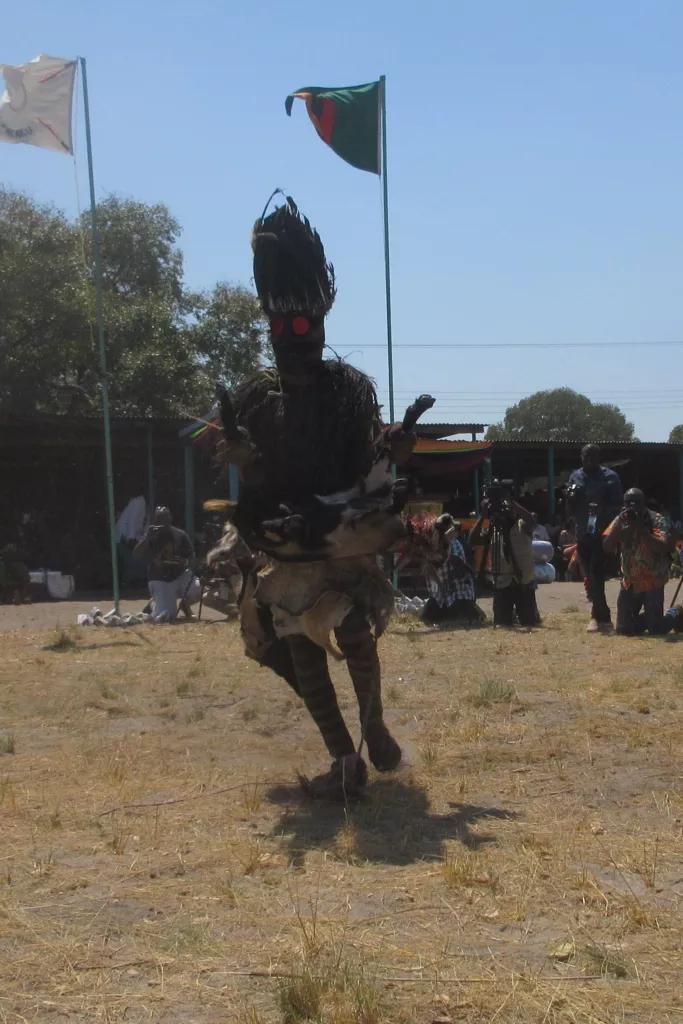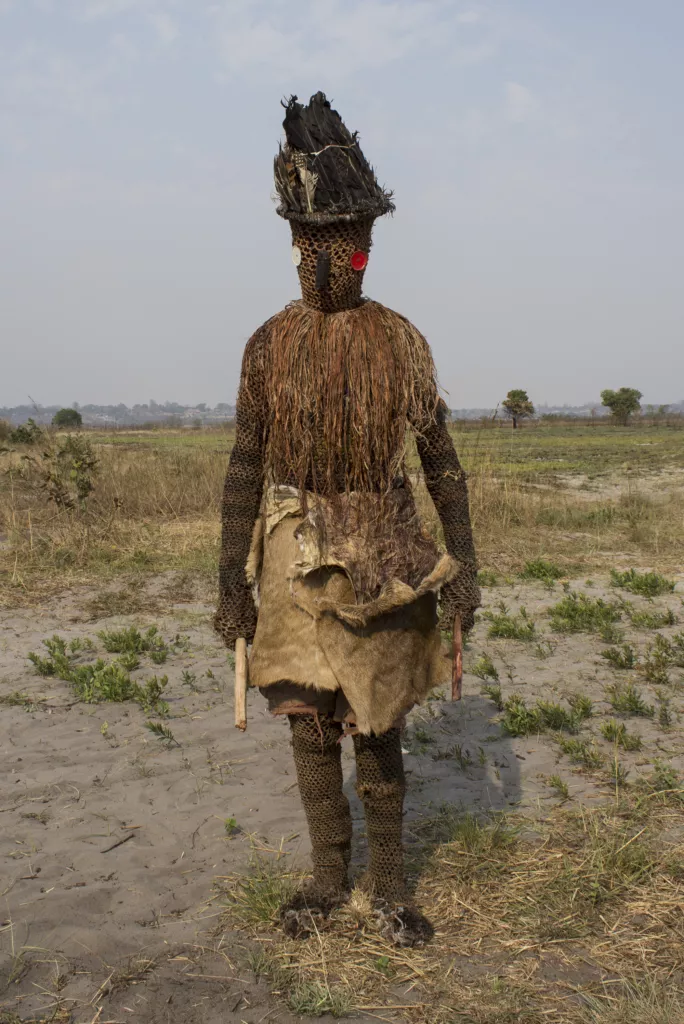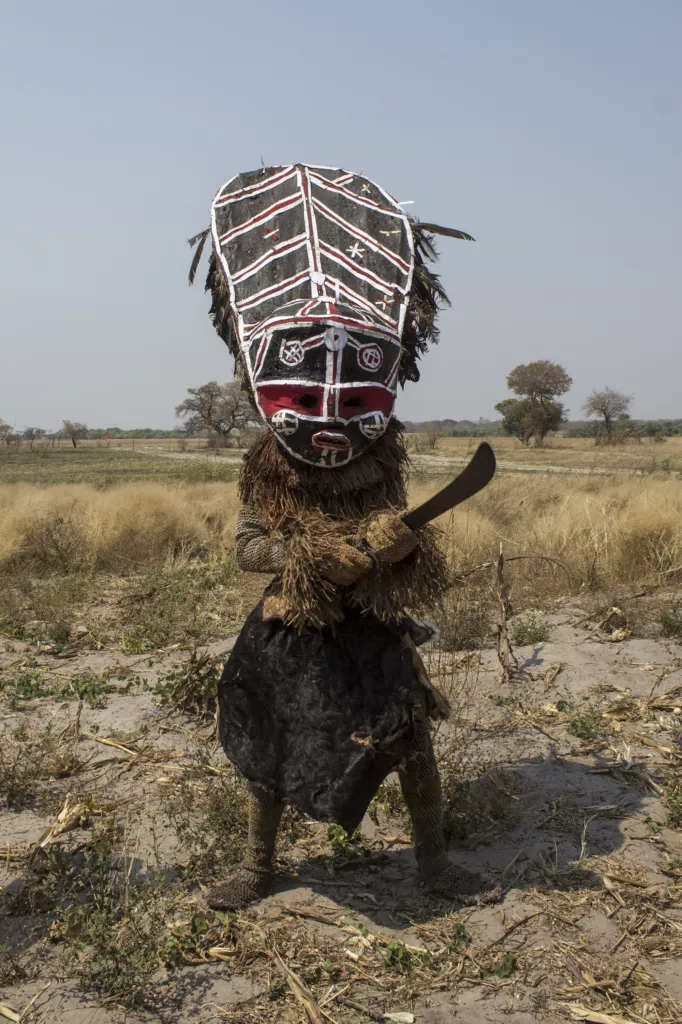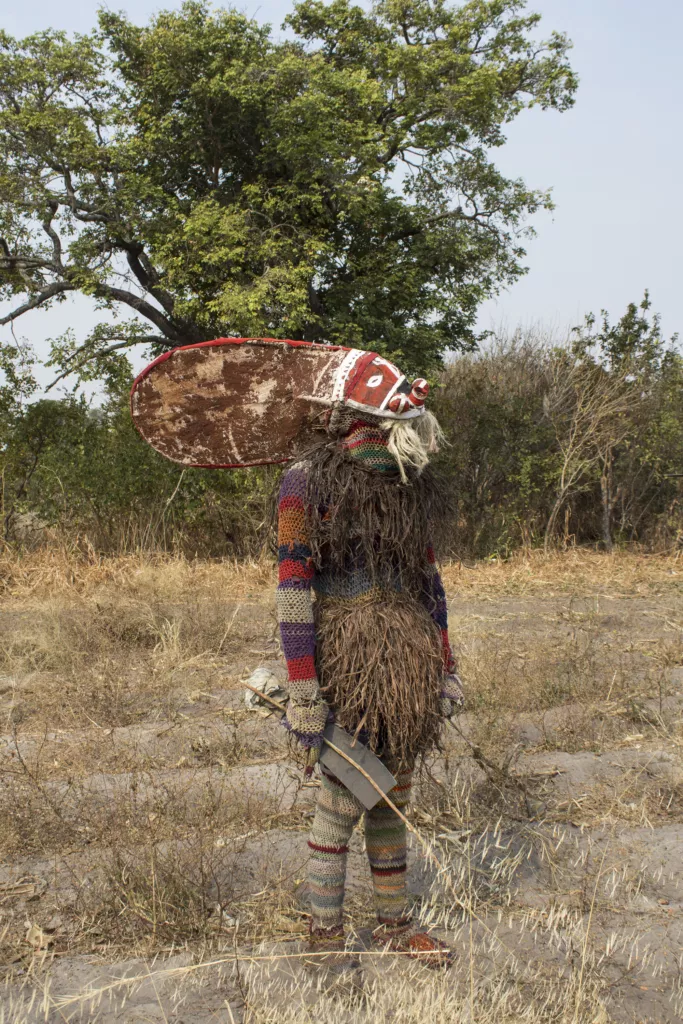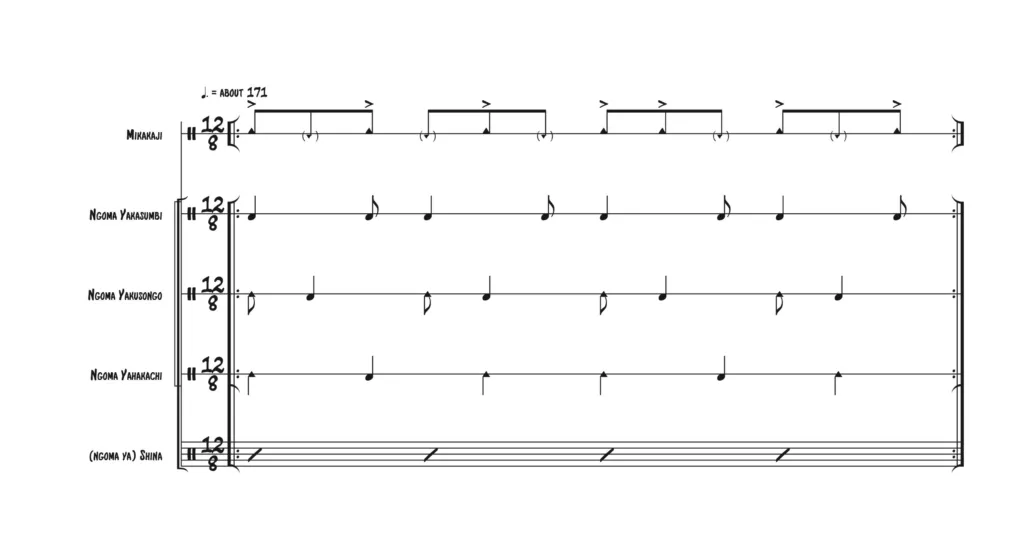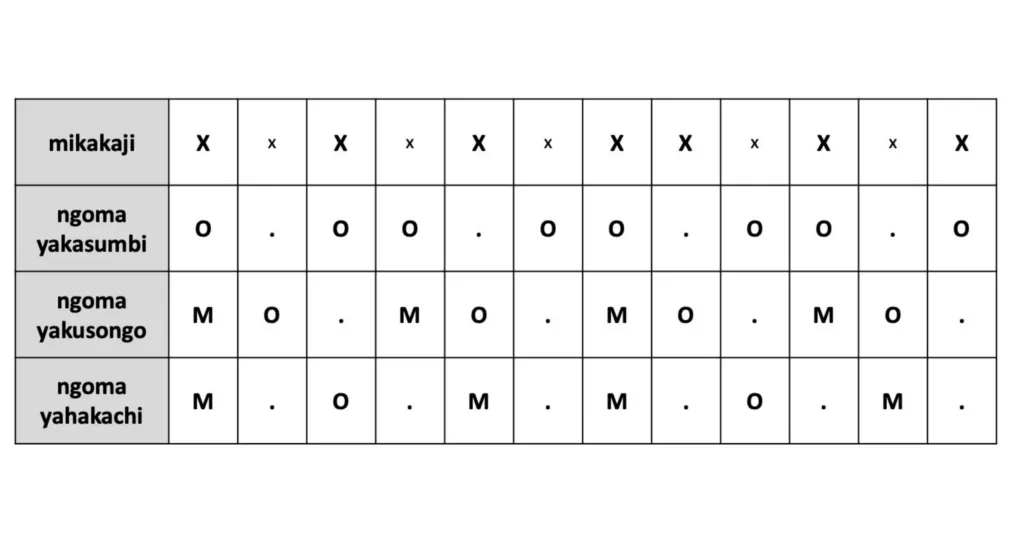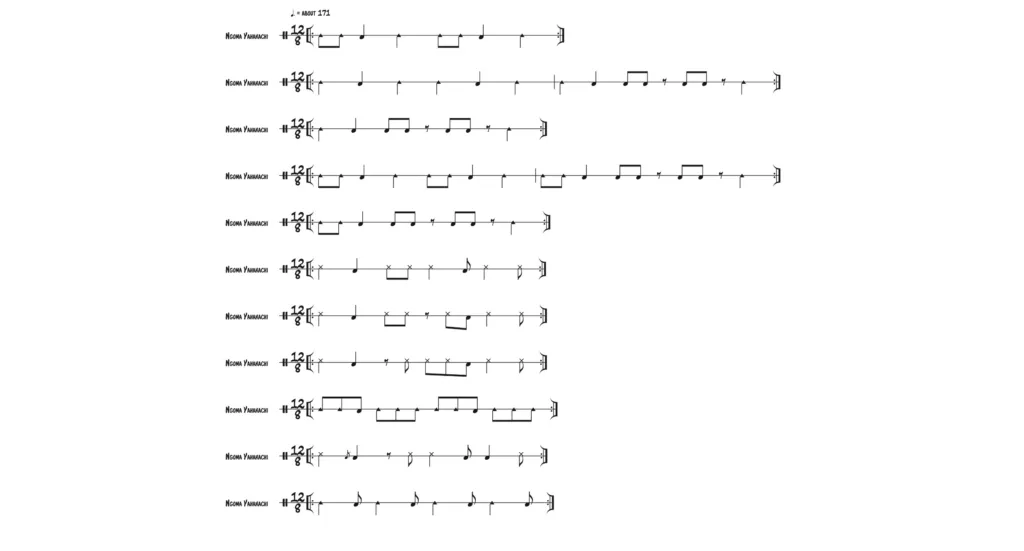Unyanga
Alternate Names: Utotola, Muta
for higher quality audio, check upcoming ILAM PROJECT; for higher quality video, download from “Videos of Luvale (and Related) Sonic Culture” link
Origin: Luchazi
Along with Kuhunga (makishi), Unyanga is the most common style of makishi music performed in vilende (large dancing events). Though most spirits who dance Unyanga are Luchazi, some important ones (like Utenu) are Chokwe. Further exemplifying the shared nature of this cultural region, Unyanga is common at vilende in Chokwe, Luchazi, Luvale, Mbunda, and other related communities. Historically, Unyanga was performed by hunters after a successful kill. Today, however, it is exclusively performed by makishi. All the spirits who dance Unyanga were hunters in a past life. Deepening this connection, some of these makishi even perform hunting duties. For example, the likishi Kapalu slaughters a goat during the Likumbi Lya Mize festival. In a more symbolic example, during the mukanda (male initiation school), the likishi Katotola hunts in the village for boys to bring to the initiation camp (Penoni 2018, 234-235).1 During the mukanda, it is said that these initiates are “killed.” Because of the importance of Katotola and his actions in mukanda, many refer to the Unyanga dance as “Utotola.”
In another manifestation of the hunter-spirit relationship, all makishi who perform this dance wear malambu (animal hide skirts). Some may even carry a bow and arrow. Many makishi in this class have other props such as a cowbell tied to their malambu, mingongo (thick sticks) that they strike together (and against their malambu), and small jizombo (short bark-cloth skirts) around their necks.
Unyanga drumming closely resembles that of Mbunda. Among other similarities, these two styles both feature a low support drum that is permitted an unusually large amount of variation and improvisation. Despite these resemblances, Unyanga and Mbunda have different songs, dances, costumes, and associated makishi. Unyanga dancing is characterized by swiveling shoulders and outstretched arms.
Makishi Who Dance Unyanga
Instrumentation
- Lead drum: ngoma ya shina
- Supporting drums: ngoma yahakachi, ngoma yakusongo, ngoma yakasumbi
- Timeline: mikakaji
Unyanga Interactive Mixer
Recorded by Chota in Kabwata Village in Lusaka, Zambia on October 28, 2021.
works best in Chrome & Firefox; allow each track to start loading before playing, refresh if necessary
| mikakaji | performed by David Chinyama | |
| ngoma yakasumbi | performed by Kakenge Kandeleyi | |
| ngoma yakusongo | performed by Martin Kasweka | |
| ngoma yahakachi | performed by William Vunda | |
| shina | performed by Chinyama Kelvin Tokha |
Alternate Supporting Drum Parts
- Penoni, Isabel. 2018. “Cilende: The Mask Dance at the Luvale Culture Festival (Angola).” Gesto, Imagem e Som 3 (1): 218–57. ↩︎

